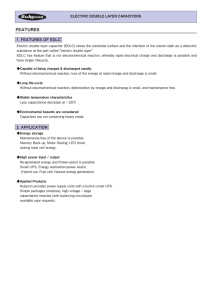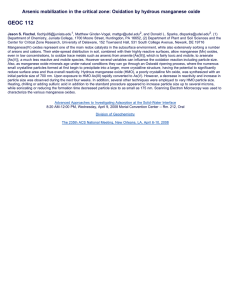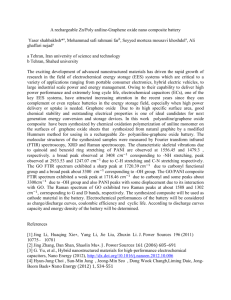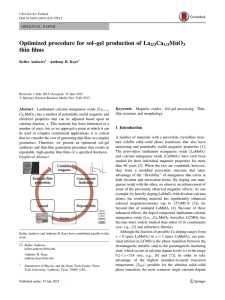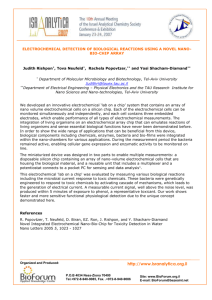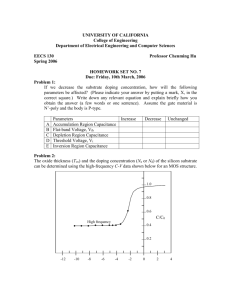Interface-dependent electrochemical behavior of nanostructured
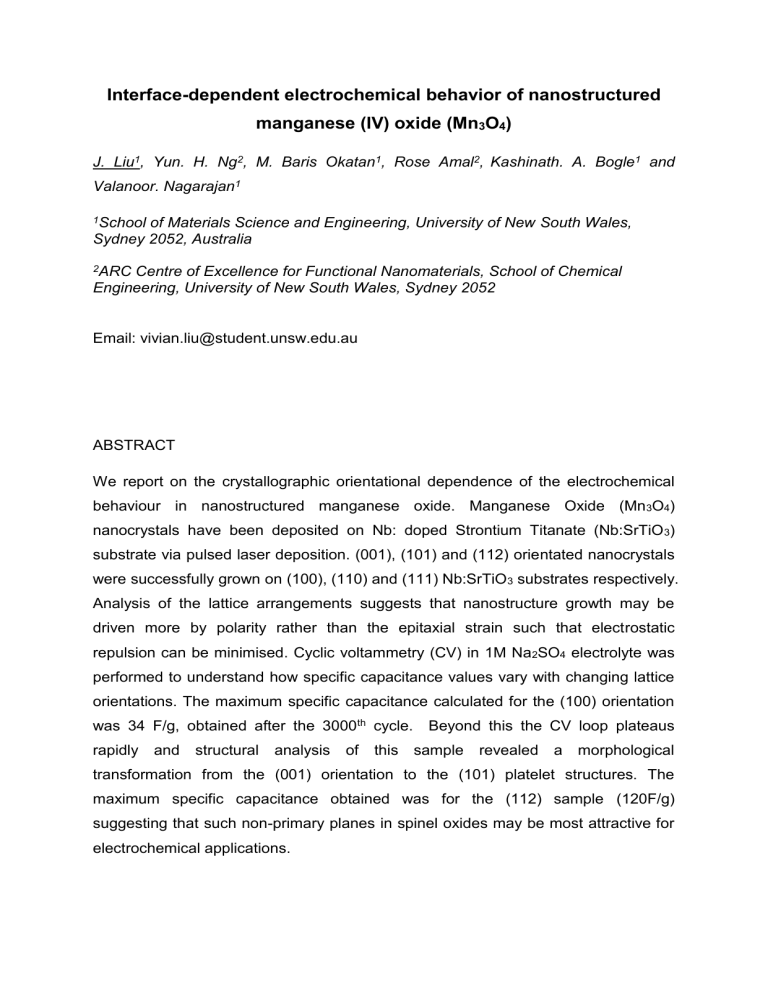
Interface-dependent electrochemical behavior of nanostructured manganese (IV) oxide (Mn
3
O
4
)
J. Liu 1 , Yun. H. Ng 2 , M. Baris Okatan 1 , Rose Amal 2 , Kashinath. A. Bogle 1 and
Valanoor. Nagarajan 1
1 School of Materials Science and Engineering, University of New South Wales,
Sydney 2052, Australia
2 ARC Centre of Excellence for Functional Nanomaterials, School of Chemical
Engineering, University of New South Wales, Sydney 2052
Email: vivian.liu@student.unsw.edu.au
ABSTRACT
We report on the crystallographic orientational dependence of the electrochemical behaviour in nanostructured manganese oxide. Manganese Oxide (Mn
3
O
4
) nanocrystals have been deposited on Nb: doped Strontium Titanate (Nb:SrTiO
3
) substrate via pulsed laser deposition. (001), (101) and (112) orientated nanocrystals were successfully grown on (100), (110) and (111) Nb:SrTiO
3
substrates respectively.
Analysis of the lattice arrangements suggests that nanostructure growth may be driven more by polarity rather than the epitaxial strain such that electrostatic repulsion can be minimised. Cyclic voltammetry (CV) in 1M Na
2
SO
4
electrolyte was performed to understand how specific capacitance values vary with changing lattice orientations. The maximum specific capacitance calculated for the (100) orientation was 34 F/g, obtained after the 3000 th cycle. Beyond this the CV loop plateaus rapidly and structural analysis of this sample revealed a morphological transformation from the (001) orientation to the (101) platelet structures. The maximum specific capacitance obtained was for the (112) sample (120F/g) suggesting that such non-primary planes in spinel oxides may be most attractive for electrochemical applications.

